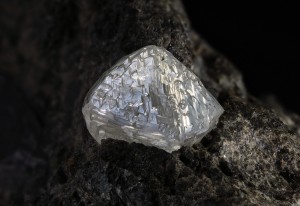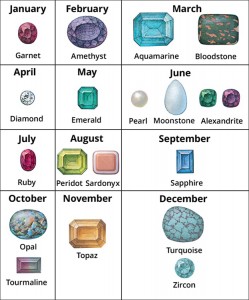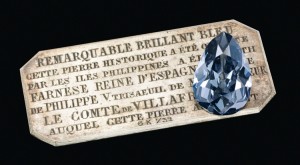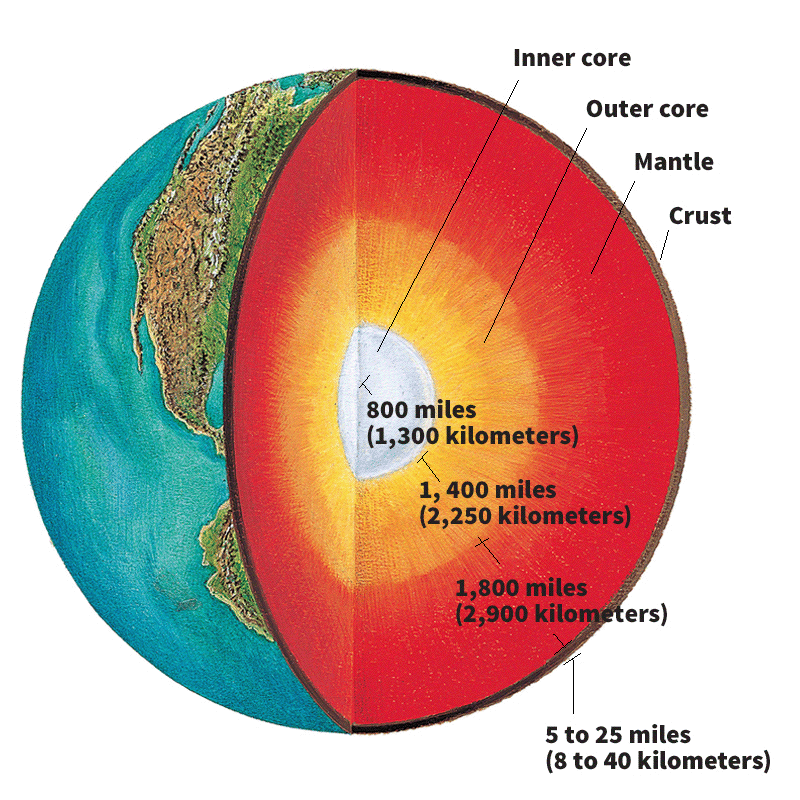April’s Diamond
Wednesday, April 24th, 2019April 24, 2019
If your birthday is in April, your birthstone—the gem associated with the month of your birth—is the diamond. The diamond is the hardest naturally occurring mineral, and also one of the most valuable natural substances. Because of its hardness, the diamond is the most lasting of all gemstones. In Europe, Japan, and North America, diamonds are widely used in engagement and wedding rings. Diamonds are also used in industry for cutting, grinding, and boring other hard materials. About half of the world’s natural diamonds are suitable only for industrial use. A small percentage are set in jewelry.

This photograph shows a naturally occurring diamond embedded in a sample of the rock kimberlite. Diamonds may be mined from pipe-shaped deposits of kimberlite, which fill the throats of extinct volcanoes. Natural diamonds are dull and must be cut by skilled jewelers to bring out the gem’s distinctive sparkle. Credit: © Matteo Chinellato, ChinellatoPhoto/Exactostock/SuperStock
Diamonds have been treasured at least since the days of the ancient Roman naturalist Pliny the Elder. He wrote: “Diamond is the most valuable, not only of precious stones, but of all things in the world.” Trade in diamonds was also prevalent in ancient India, and by the Middle Ages diamonds were fashionable accessories in several parts of the world. The diamond is a traditional birthstone for Aries (March 21-April 19), a sign of the zodiac. It is also a traditional gem gift for a 60th wedding anniversary—an event also called a diamond anniversary. In the past, some people believed diamonds possessed magical powers. According to legend, wearing a diamond could relieve fatigue or cure mental illness.
Diamonds are crystals that are made up almost entirely of carbon. Some diamond crystals have six faces, but most form octahedrons,which have eight faces. Natural diamonds probably form in Earth’s upper mantle—the zone beneath the crust—where high temperature and pressure cause carbon to crystallize. Diamonds are later brought to Earth’s surface by volcanic activity. The gems can be found in several places around the world, but the leading producers of natural diamonds include Australia, Botswana, Canada, the Democratic Republic of the Congo, and Russia.

Click to view larger image
Birthstones, according to tradition, bring good luck when worn by a person born in the associated month. Credit: WORLD BOOK illustrations by Paul D. Turnbaugh
According to tradition, a birthstone brings good luck to a person born in its month. Each birthstone also corresponds to a sign of the zodiac. The belief in birthstones may have come from a Bible story about Aaron, the first high priest of the Israelites. The story describes Aaron’s breastplate, which was decorated with 12 precious stones. Early writers linked these stones with the 12 months of the year and the 12 signs of the zodiac. The custom of wearing a stone that represented a person’s zodiac sign probably originated in Germany or Poland in the 1700′s.




